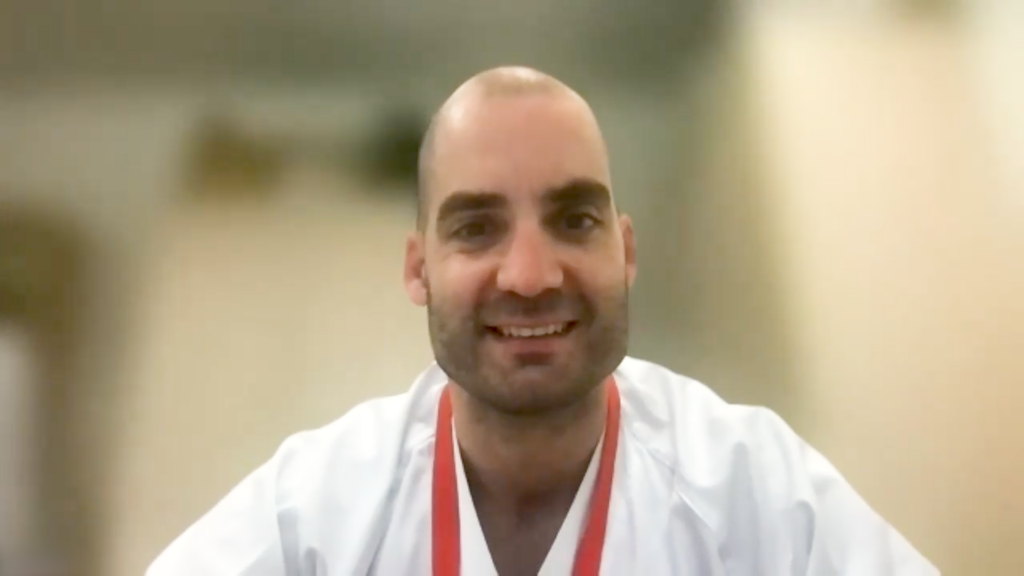touchCARDIO coverage of data presented at ESC 2024
touchCARDIO spoke with Dr Margarida Pujol-Lopez, Hospital Clinic of Barcelona, Barcelona, Spain to get the results from CONSYST-CRT, presented at ESC 2024.
In this interview, Dr. Margarida Pujol-Lopez from the Hospital Clinic in Barcelona discusses the differences between conduction system pacing (CSP) and biventricular pacing (BVP) in treating heart failure. CSP is more physiological and may offer better outcomes than BVP, which fails in about 30% of patients. The CONSYST-CRT trial, comparing CSP and BVP, showed that CSP is non-inferior to BVP based on primary and secondary endpoints, including mortality, heart failure, and QRS shortening.
Dr Pujol-Lopez emphasizes the need for personalized approaches, as neither therapy fits all patients. She also highlights the importance of larger multicentre studies to confirm these findings and improve therapeutic decisions based on individual patient conditions.
Disclosures: Margarida Pujol-Lopez has received grant/research support from Río Hortega contract CM22/00107 [Instituto de Salud Carlos III (ISCIII); Fondo Social Europeo (FSE)] and speaker honoraria from Medtronic.
This content has been developed independently by Touch Medical Media for touchCARDIO and is not affiliated with ESC. Unapproved products or unapproved uses of approved products may be discussed by the faculty; these situations may reflect the approval status in one or more jurisdictions. No endorsement of unapproved products or unapproved uses is either made or implied by mention of these products or uses by Touch Medical Media or any sponsor. Views expressed are the speaker’s own and do not necessarily reflect the views of Touch Medical Media.
Click here for more content on interventional cardiology and for further ESC 2024 highlights visit here.
Interview Text
Author provided and approved text of interview:
Introduction
Hi, good morning, I’m Margarida Pujol-Lopez, I’m a cardiologist from Barcelona, an electrophysiologist from the Hospital Clinic in Barcelona.
What is the difference between conduction system pacing and biventricular resynchronization therapy?
Both therapies are resynchronization therapies. The gold standard is biventricular pacing, a therapy started 30 years ago. This therapy is for patients with left ventricular dysfunction, wide QRS and heart failure. And this therapy works pretty well. It uses three leads in the heart, and paces the heart from the right ventricle and from the left ventricle. Pacing from the left ventricle is epicardial, then it’s not very physiological.
And the problem that we have is that approximately 30% of patients do not response to biventricular pacing. During the last years, we have a new option that is conduction system pacing. Conduction system pacing is more physiological because we are trying to pace directly the wires of the heart. The electrophysiology community thinks that maybe could be better compared to biventricular pacing. And this is the reason why a lot of studies are centered in comparing biventricular pacing and conduction system pacing.
What are the aims and design of CONSYST-CRT? What were the primary and secondary endpoints?
CONSYST-CRT is a randomized clinical trial with 134 heart failure patients. And the difference from other trials is that the primary endpoint is a combined clinical endpoint. That is a combination of mortality, heart failure hospitalization and left ventricular ejection fraction increase of less than 5%.
Then, this is the difference from other studies, that we have comparing conduction system pacing with biventricular pacing. We have two previous randomized trials that compared left ventricular ejection fraction increase (LBBP-Resync and HOT-CRT).
We have as secondary endpoints: volumes (left ventricular end-systolic volume), left ventricular ejection fraction, the clinical endpoint without the left ventricular ejection fraction, NYHA class, and dyssynchrony parameters.
The analysis that we did is intention-to-treat. We have prespecified other analysis (treatment received and per protocol), but the main analysis is intention-to-treat. Crossover was allowed in this trial if the primary therapy (lead implant) was not successful.
And we included 134 patients. Very important, it’s a non-inferiority trial.
The results of, the primary endpoint showed the non-inferiority of conduction system pacing compared to biventricular pacing (in this primary endpoint of all-cause mortality, cardiac transplant, heart failure hospitalization, or left ventricular ejection fraction improvement of less than 5%).
And, also, we showed non-inferiority for four secondary endpoints: the clinical endpoint only, the echocardiographic response, NYHA class, and QRS shortening.
What were the inclusion and exclusion criteria?
The inclusion criteria were patients with heart failure with optimal medical treatment and left ventricular ejection fraction of less than 35% plus QRS that was wide (left bundle branch block with QRS ≥130 or QRS ≥150 ms in non-left branch block). Or the other inclusion criterion was patients with AV block and left ventricular ejection fraction less than 40%.
How well were the primary and secondary endpoints achieved?
The results of the primary endpoint showed non inferiority of conduction system pacing compared to biventricular pacing. We obtained 23% of this endpoint for conduction system pacing and 29% for biventricular pacing. The p value was inferior to 0.05. And then we can say that the primary endpoint was non-inferior for conduction system pacing compared to biventricular pacing.
And we had four secondary endpoints that also we obtained non-inferiority:
- All-cause mortality, cardiac transplant and heart failure hospitalization (clinical endpoint)
- Echocardiographic response assessed with volumes
- NYHA class
- QRS shortening.
These results show that conduction system pacing in patients with cardiac resynchronization indication could have very similar results, non-inferior results, compared to biventricular pacing. And, this means that, pending of larger randomized clinical trials, conduction system pacing would be a very good alternative to biventricular pacing. The problem that we had until now was that if we failed with biventricular pacing, the only option was to implant a lead epicardically (implies surgery).
Now we have another tool in our armamentarium that can help the patient without doing surgery (epicardial implant of the lead).
What were the strengths and limitations of this study?
About the strengths of the study, the main strength is that this trial, for the first time in a randomized clinical trial with conduction system pacing, we are talking about a clinical endpoint. Because with previous studies, for example the LEVEL-AT trial, we talk about decrease in left ventricular activation time; then it’s a surrogate endpoint, and it’s not the same as a hard endpoint.
And we have two other randomized clinical trials: LBBP-Resync and a randomized clinical trial by Dr Vijayaraman (HOT-CRT). But they studied left ventricular ejection fraction. Our trial is the first study that shows non-inferiority of a combined clinical endpoint. Because at the end, what we want, it’s not left ventricular ejection fraction improvement of five points; we want hard endpoints.
As a limitation, the sample size is only 134 patients; we are waiting for longer studies, like Left vs Left in the United States; it will provide answers about clinical endpoints comparing conduction system pacing and biventricular pacing with a very large sample size.
And another limitation is the crossover. This is a chronic problem for trials including conduction system pacing; the first trial, His-SYNC, only with His bundle pacing, had a very high percentage of crossover. Crossover (from Conduction system pacing to biventricular pacing) has been a little bit lower with the next studies, but in our study was 26%; 23% in the LEVEL-AT trial.
The thing is that we are doing the crossover from conduction system pacing to biventricular pacing if we have wide QRS without meeting left bundle branch pacing strict criteria. But we are not applying in the general clinical practice the same criteria for biventricular pacing; because if we implant a biventricular pacing with left ventricular lead and we obtain a wide QRS, we are not doing this crossover. This is a problem, because we apply different criteria for crossover from conduction system pacing compared to biventricular pacing; then we are stricter with conduction system pacing.
That is a good thing, but this is why we have in all the conduction system pacing trials, a high percentage of crossovers; because we are very strict in applying the criteria to know for sure if we are resynchronizing. Because we know that the other alternative -biventricular pacing- is very good, then we have to provide a good therapy for our patients.
What are the next steps from here?
I think that the next steps are… First, we have to work in multicenter studies, to do randomized clinical trials with more patients. Because we are doing in Europe, small clinical trials, in United States, small clinical trials, in China, small trials. Then, what they are doing in United States is a very large clinical trial, Left vs Left; it is fantastic. It will take a lot of time, but the results will be very important for our patients to know for sure if conduction system pacing is a superior therapy for our patients, or maybe the best option is to personalize the therapy.
And I think that this is the other step, personalization of the therapy, because I do think that conduction system pacing is not for all CRT patients. I think that the best option is to personalize. If a patient, for example, has septal scar, maybe in this patient is better to implant a biventricular pacing therapy. Because if we try to implant this lead in the conduction system, we will fail in this septum, then we will not have good results.
Or if a patient has intraventricular conduction disease, maybe it’s better to do biventricular pacing or LOT-CRT; or if the scar is in the lateral wall, maybe it’s better conduction system pacing. Then we should know, we should have more information to choose the best therapy for our patients. Maybe conduction system pacing will not be superior to biventricular pacing, but we can find the niche for each therapy.
And, also, I think it’s very important that when we are comparing conduction system pacing with biventricular pacing, to be fair… we should optimize biventricular pacing. If we provide the patient with out-of-the-box programming, and we’re comparing it with conduction system pacing, then maybe conduction system pacing will be better because we are strict implanting these types of devices. But we have, demonstrated in the literature that if we optimize -with the BEST trial published in JACC EP- we can obtain better results with biventricular pacing.
I do think that the best option is to compare conduction system pacing with optimized biventricular pacing, then we will be fair, and the results will represent the reality about these therapies -both are good-; but maybe one is better for some patients, and the other is better for other patients.
***
I would like to give recognition to all the team in Barcelona for conducting this trial because always, conducting a randomized clinical trial, it’s very difficult. Thank you so much.
Cite: Pujol-Lopez, M. Conduction system pacing versus biventricular resynchronization therapy in systolic dysfunction and wide QRS: CONSYST-CRT, October 24 2024.











